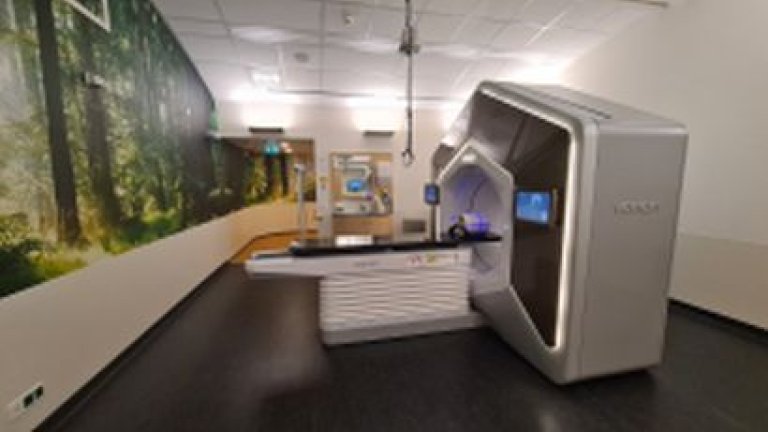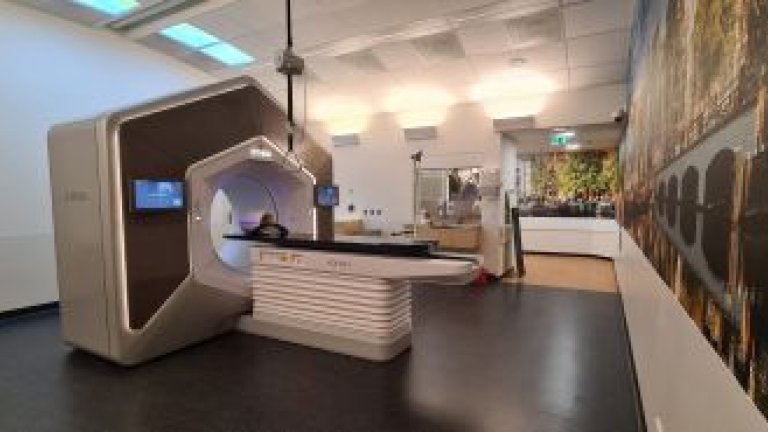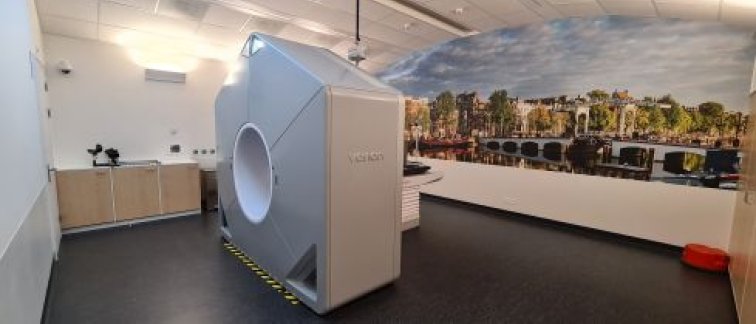These accelerators utilize the latest software, including artificial intelligence. With this design and this software, it is possible to adapt the treatment plan to the daily anatomy of the patient instead of applying the same plan every time. This technique is called online adaptive radiotherapy and it allows for a much more precise treatment which results in less radiation exposure of the healthy surrounding tissue.
Adaptive therapy is one of the most important developments in the field of radiotherapy, and the new Ethos solution will greatly increase our ability to offer this advanced treatment to patients," says Prof. Ben Slotman, head of the department of Radiation Oncology.
External beam radiotherapy is a non-invasive treatment modality that aims at eradicating cancer using ionizing radiation and is delivered using a linear accelerator. It can be a stand-alone therapy or part of an adjuvant treatment combined with surgery and/or chemotherapy
The radiotherapy treatment typically starts with a single reference CT scan to define the target volume and to create a treatment plan. To take advantage of better repair mechanisms in healthy tissue compared to cancer cells this treatment plan is delivered over a number of days.
Improving quality of life by limiting side effects
Daily posture changes of the patient and internal anatomy changes need to be mitigated by applying a safety margin to the tumor volume to improve the probability of delivering the prescribed dose to the tumor volume. This inevitable leads to radiation exposure of surrounding healthy tissue which can lead to acute and/or long-term side effects. Every effort is made to limit the side effects thus improving patients’ quality of life.
Shrinking the safety margins around the tumor
To date this technique has been successfully implemented for the treatment of bladder and rectum cancer on these newly installed accelerators at Amsterdam UMC. In the pelvic region safety margins around the tumor are typically large when treating with a single plan because bladder and rectum filling can vary substantially over the different treatment days. Using this type of adaptive radiotherapy can shrink the safety margins around the tumor from 15-20 mm to 5-8 mm, limiting the exposure of healthy tissue
A daily treatment on the Ethos accelerator starts with a CT scan using integrated imaging. Subsequently, smart software will automatically detect all relevant anatomy, i.e. tumor and healthy tissues. After a visual check a new plan is calculated and delivered. In total this procedure takes around 30 minutes.
Team present at the treatment
Because of the novelty of this treatment, the procedure is executed with a team of radiation oncologists, physicists and radiation therapists present at the treatment machine. In the future, these procedures will be executed with only radiation therapists present.
Later this year, adaptive radiotherapy will be developed for prostate and cervix cancer as well.
More information? Mail to Rianne de Jong



